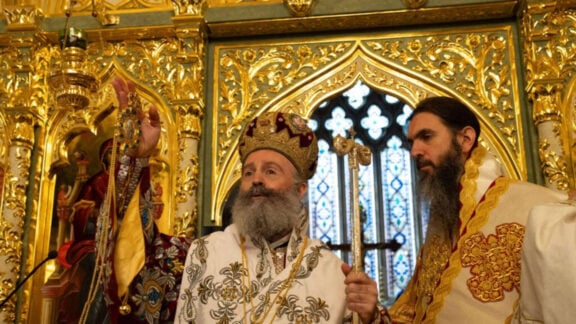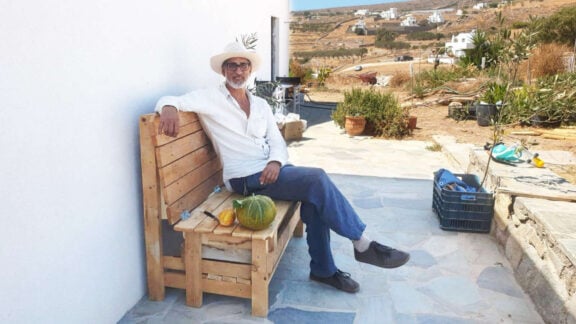Pontus is one area of the Hellenic world that conjures pride and sadness at the same time.
Greek colonists made their way, far from the Greek heartland around the Seventh and Sixth Centuries BC, with the first settlement occurring in 800. With the sea to help keep out invaders and high mountains in their south, Pontus was in an excellent position to grow and prosper.
We know that the Greek history of Pontus came to a tragic end with the disgraceful 1923 population exchange between the new Turkish nation and the recently defeated Greece; most Pontians were sent to the USSR. This was one of the many fallouts of the Asia Minor Catastrophe whereby Greeks lost there presence in Asia Minor, simultaneously having our Hellenic identity ripped out of Anatolia.
One of the main cities of Pontus is of course Trebizond, a sanctuary city. Xenophon was a famous historian, warrior, philosopher, and student of Socrates. He made it to Trebizond along with his 10,000 men in 399 BC after escaping a ruthless Persian Empire that had pursued them for two years. The city welcomed them as they welcomed any other weary traveller. Xenephon’s men proclaimed, “thalata, thalata,” as they found the safety and comfort of the sea in the premier city of Pontus. Pontian or Pontic people were always happy to show a sense of “philoxenia,” the Greek hospitality was certainly shown to Xenophon, much to his relief as their fight against the Persians was at an end.
Over six decades after Xenephon, Alexander conquered Anatolia when he destroyed the Persian Empire. I am sure Xenophon, and his men would have been delighted had they lived until 334. This meant that Greek hegemony came to the region before Alexandros’ general Antigonus took Pontus between 323–302 BC upon the Great king’s death.

Not long after, Mithridates entered Pontus. Mithridates I, is known as the “founder.” He entered with just six cavalry and proclaimed himself master of the Pontic area. His territory included part of the inland region of Paphlagonia. Mithridates was actually the son of a Persian nobleman, however, with the bulk of the Kingdom being Greek, he and his successive rulers were heavily influenced by Hellenism and most married Hellenes. The official language was Greek, and the new king also incorporated former Persian and Greek territories in the south. His reign came to an end in 266 BC, proving to be a competent King who was able to hold off Ptolemy I from Egypt.
His grandson, Mithridates II, succeeded him in 250, lasting forty years. Mithridates married a sister of the King of the Hellenic Seleucid Kingdom and received the province of Phrygia. In turn they ended up fighting each other as in-laws occasionally do. This was at the ferocious battle of Ancyra in 239 which marked the strength of the Pontians as a powerful military machine. The Seleucids lost twenty thousand men, a huge chunk of forces.
Pontus was nearing a peak in its territorial ambitions and with the energetic Pharnaces I 189–159 BC, the kingdom grew. Victories against the Greek kingdoms of Macedonia and Seleucia followed. Then came the conquest of Sinope in 183.
At the start of the reign of Mithridates IV, a more peaceful policy was adopted and implemented. They had already cultivated friendly relations with other Greek speaking territories, notably in Crimea and Odessos in modern Bulgaria. As a staunch supporter/ally of Rome, he was essentially allowed to go about his business in a quiet manner.
Born to a Greek Princess, he sought to honour the Greek and Persian heritage he was born with. An example of this is the coinage he created whereby he selected the image of Perseus, a Greek hero with Persian and Assyrian ancestry.

By 113, however, the time was ripe for a hero to begin a showdown with arguably the biggest power in the world. Why on earth anyone could think that they were a match for Rome, can only be a question for Mithridates VI to answer!
Mithridates VI Eupator is one of the leading figures in Pontian history and the Hellenistic Era. His reign lasted until 63 BC as he set about conquering most of the Black Sea and Asia Minor.
The Crimea, the coast of Bulgaria in the west and essentially all the way around the coast of Asia Minor had a footprint from the Pontic people thanks to Mithridates. His decision to expand into Asia Minor away from the Black Sea led to trouble with the Romans who had been allies to the point that they gave Pontus the region of Phrygia years earlier. That same region was regained by Rome around the time of Mithridates’ ascent to the throne.
Mithridates fought Nicomedes of Bithynia in 89BC, defeating him and two Roman legions sent to support Nicomedes.
The sources for the period indicate that Mithridates then ordered a massacre of Italians living in Asia Minor, known as the Ephesian Vesper. This precipitated the first major war with Rome. Modern commentators are hesitant to fully accept this explanation.
Based on the view that all powerful empires eventually collide, Rome may have been keen to find an excuse to fight Mithridates who similarly wanted to test himself against Rome. Conversely, the Greek world viewed him as their champion, until a massacre on Chios a few years later. All told, Latin sources including Apian indicate that tens of thousands of Roman citizens perished.
From 106, Mithridates had annexed lesser Armenia, a small kingdom bordering Pontus and Armenia proper, followed by Colchis in Georgia, which was once home to the Medea and many Greek settlements.
By 87BC, Asia Minor and many regions of Greece including Athens was under the rule of Mithridates. Most of Greece south of Macedonia joined the cause, seeing a new champion against the Romans. Alas, one of the brilliant leaders and soldiers that Rome has ever known soon came to the fore, Sulla. By 86 he had captured most of Greece with ferocious fighting and dogged strategies. Few leaders in history could match his brilliance.
Pontic forces were defeated in two further pitched battles with Sulla over the next twelve months. The Roman military machine entered Bithynia a year later and this was enough for Mithridates to raise the white flag. The King of Pontus was forced to meet Sulla for a peace conference. The result was the loss of Bithynia and Cappadocia, along with Roman Asia and a large indemnity.
One would think that Mithridates could hold his head high and secure his kingdom without ever taking on Rome again. However, Mithridates started a war with Licinius Murena between 83–82 BC and was fortunate no major territorial losses were recorded. In 75, his old adversary Nicomedes passed away with no heirs, bequeathing his kingdom to Rome. This meant that Mithridates would consider an invasion; and sure enough he did just that two years later. His fleet defeated the Romans off the coast of Macedon.

The Romans countered and were able to force a retreat from Mithridates. A series of skirmishes were fought with Rome until the total destruction of his forces occurred in Lesser Armenia.
Retreating to Armenia proper, Mithridates and his allies were defeated. They once again retreated with the Armenian king who was not exactly pleased with how Rome was pillaging Armenian territory.
By 67, Mithridates had regrouped and defeated a strong Roman force in Zela in Pontus. Mithridates should have sought peace. Instead, his Armenian allies took Cappadocia, prompting the appearance of Pompey with 45,000 troops. Pompey was just as brilliant as Sulla on the battlefield.
Pompey used the Parthians to attack the flank of Armenia in 65 while he took on Mithridates who had mustered 33,000 men. Pompey was able to best Mithridates with a surprise night-time foray, which was most unusual in ancient warfare.
The King of Pontus fled to Colchis; while in Armenia, Pompey dismantled the empire of Tigranes, though he allowed him to maintain his throne in a smaller region.
Pompey annexed the west of the Pontus realm, absorbing the Province of Bithynia. The east and the hinterland became a client state of Rome. Similarly, Colchis became a client state for Rome. Puppet Pontic rulers sat on the throne of the Greek speaking Pontus until Emperor Nero officially ended all aspirations of the kingdom in 62 AD.
The story of Pontus does not end here, fortunately, or unfortunately. Greek remained the language, the Christian religion of Byzantine Empire made its way to the region as one of the provinces of Byzantium.

Pontus returns as an international power in the late medieval epoch as the Greek Empire of Trebizond. The empire held Pontic lands and part of Crimea until the Ottomans prevailed in 1461. This is followed later by the tragedy of the cruel destruction of Pontus’ Greek civilisation in the last years of the Ottoman Empire with the genocide of these Greek peoples.
Several years before the genocide, the Pontian people had sought to create the Hellenic Republic of Pontus. Sadly, at the 1919 Paris Peace Conference, this was rejected mostly due to Venizelos’ fear that Pontus would struggle to protect itself. There were at least 700 to 800 thousand Greeks in the region by WWI. There were another 350,000 who had fled Pontus after Ottoman persecution the previous decade. Pontus also contained minorities of Turks, Circassians, Armenians, Tartars and Assyrians.
Today, there are Pontian Greek Muslims who live in the region.
Xenophon and Mithridates may not find Trebizond is the home of Greeks any more or the famous Hellenic philoxenia, they will still feel the presence and heartbeat of the 2700 years of brilliant Pontian culture and history.
*Billy Cotsis is the author of The Aegean Seven Take Back The Stolen Marbles









